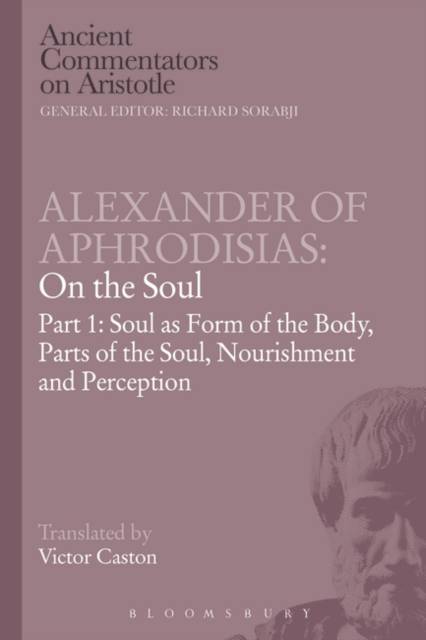
- Afhalen na 1 uur in een winkel met voorraad
- Gratis thuislevering in België vanaf € 30
- Ruim aanbod met 7 miljoen producten
- Afhalen na 1 uur in een winkel met voorraad
- Gratis thuislevering in België vanaf € 30
- Ruim aanbod met 7 miljoen producten
Alexander of Aphrodisias
On the Soul: Part I: Soul as Form of the Body, Parts of the Soul, Nourishment, and Perception
€ 88,45
+ 176 punten
Omschrijving
Around 200 AD, the greatest defender and interpreter of Aristotle within his school, Alexander of Aphrodisias, composed his own book On the Soul, partly following the pattern of Aristotle's.
In the first half, translated in this volume, he discusses the soul as the form of the body, and the idea of parts or powers that constitute the soul of living things, including the two lowest powers: nutrition and perception. In the second half, translated in Part II, he discusses perception, representation, desire, understanding and - a notion emphasised by the Stoics - the governing part of the soul. He takes the soul to consist of these powers, which supervene on the mixture of the body's elemental ingredients, just as inanimate powers like buoyancy or lightness can supervene on other qualities. They are new, emergent causal powers of the living thing, which do not belong to the constituent ingredients of the body in themselves.
Through his notion of emergence, he seeks to steer between the Platonic dualism of soul and body and the extreme materialism of his Stoic rivals.
This volume contains the first English translation of the work, as well as a detailed introduction, extensive explanatory notes and a bibliography.
In the first half, translated in this volume, he discusses the soul as the form of the body, and the idea of parts or powers that constitute the soul of living things, including the two lowest powers: nutrition and perception. In the second half, translated in Part II, he discusses perception, representation, desire, understanding and - a notion emphasised by the Stoics - the governing part of the soul. He takes the soul to consist of these powers, which supervene on the mixture of the body's elemental ingredients, just as inanimate powers like buoyancy or lightness can supervene on other qualities. They are new, emergent causal powers of the living thing, which do not belong to the constituent ingredients of the body in themselves.
Through his notion of emergence, he seeks to steer between the Platonic dualism of soul and body and the extreme materialism of his Stoic rivals.
This volume contains the first English translation of the work, as well as a detailed introduction, extensive explanatory notes and a bibliography.
Specificaties
Betrokkenen
- Vertaler(s):
- Uitgeverij:
Inhoud
- Aantal bladzijden:
- 256
- Taal:
- Engels
- Reeks:
Eigenschappen
- Productcode (EAN):
- 9781472557988
- Verschijningsdatum:
- 10/04/2014
- Uitvoering:
- Paperback
- Formaat:
- Trade paperback (VS)
- Afmetingen:
- 156 mm x 234 mm
- Gewicht:
- 367 g

Alleen bij Standaard Boekhandel
+ 176 punten op je klantenkaart van Standaard Boekhandel
Beoordelingen
We publiceren alleen reviews die voldoen aan de voorwaarden voor reviews. Bekijk onze voorwaarden voor reviews.









